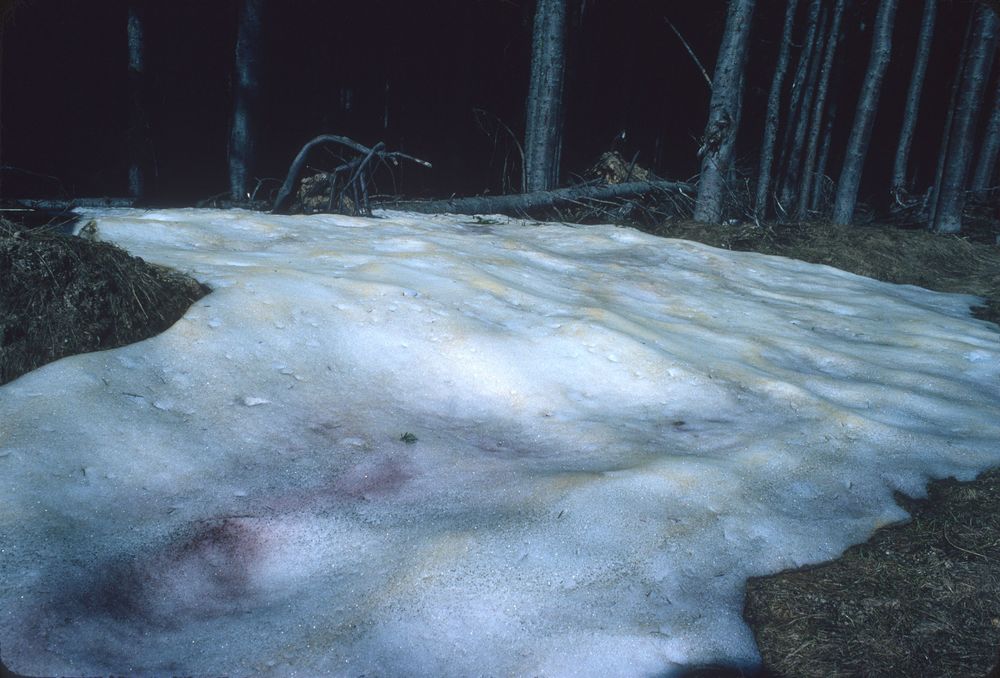
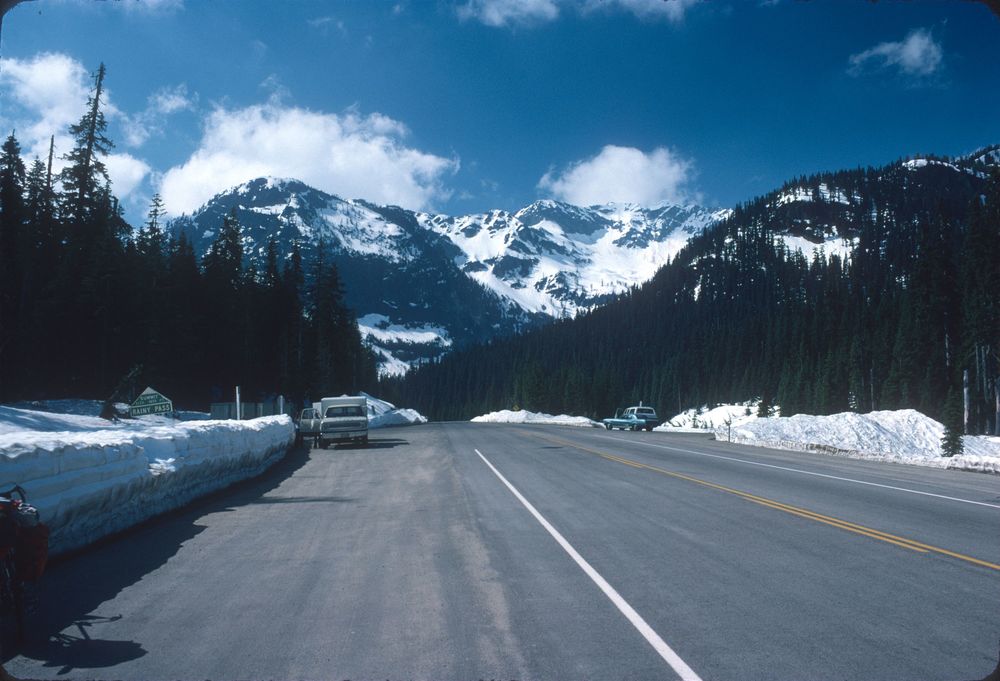
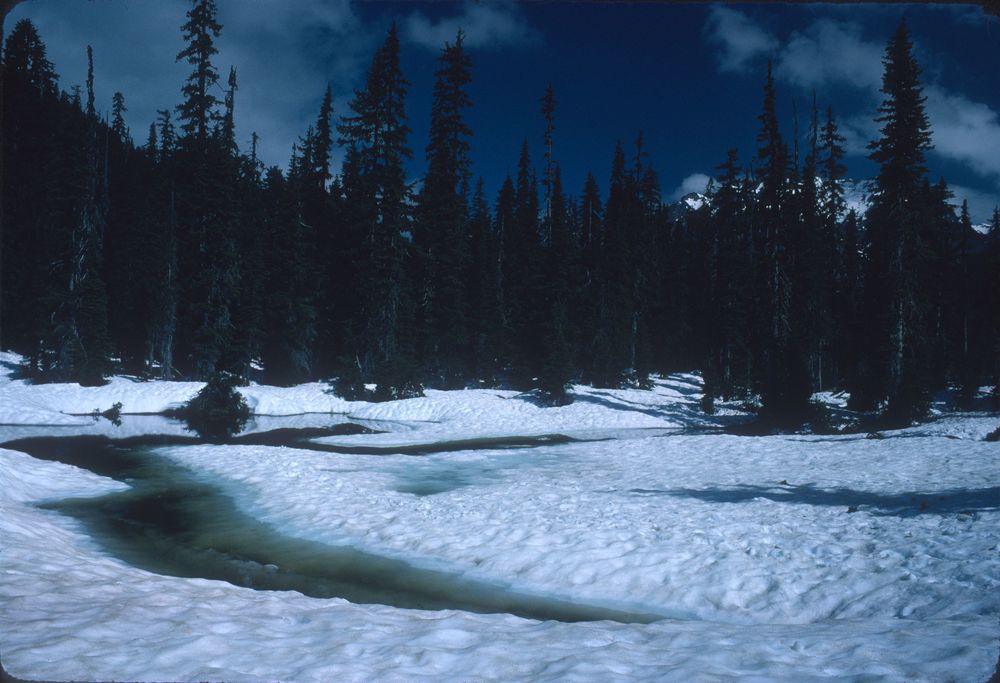
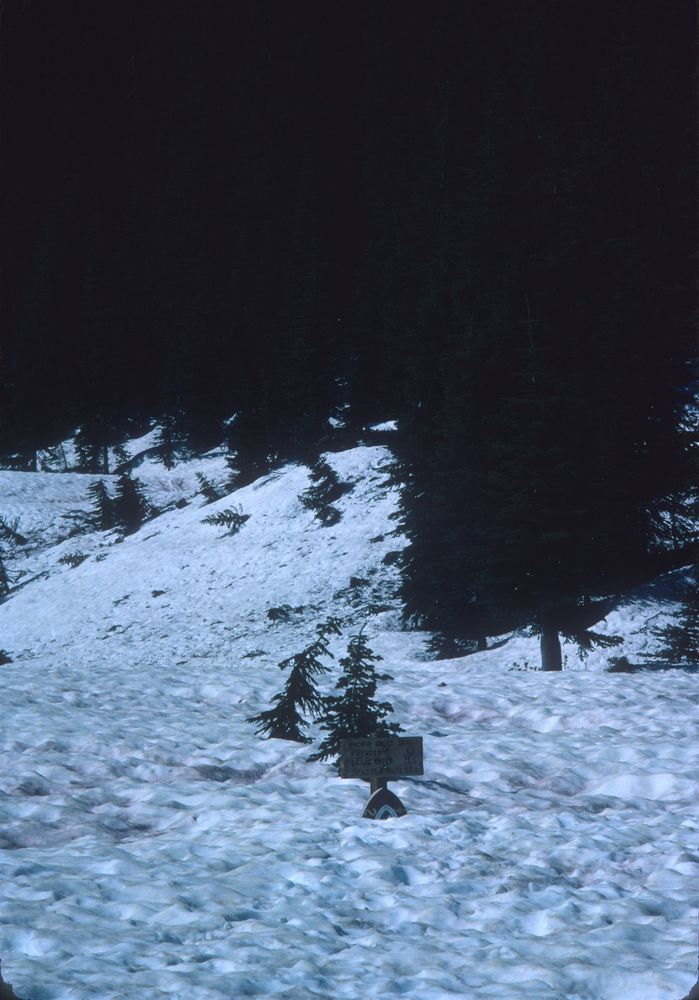
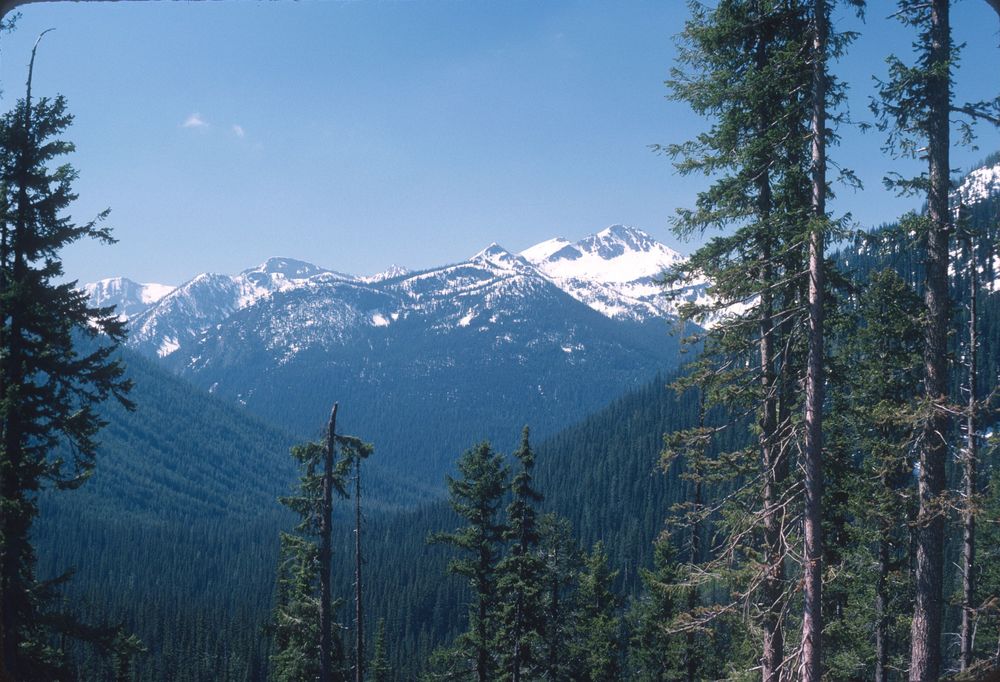
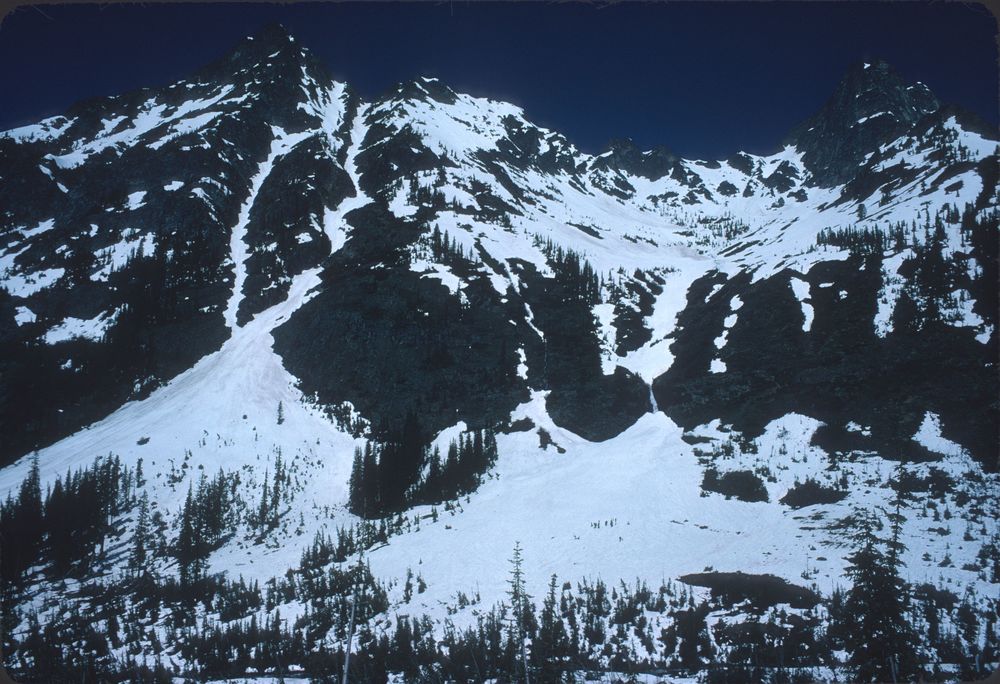
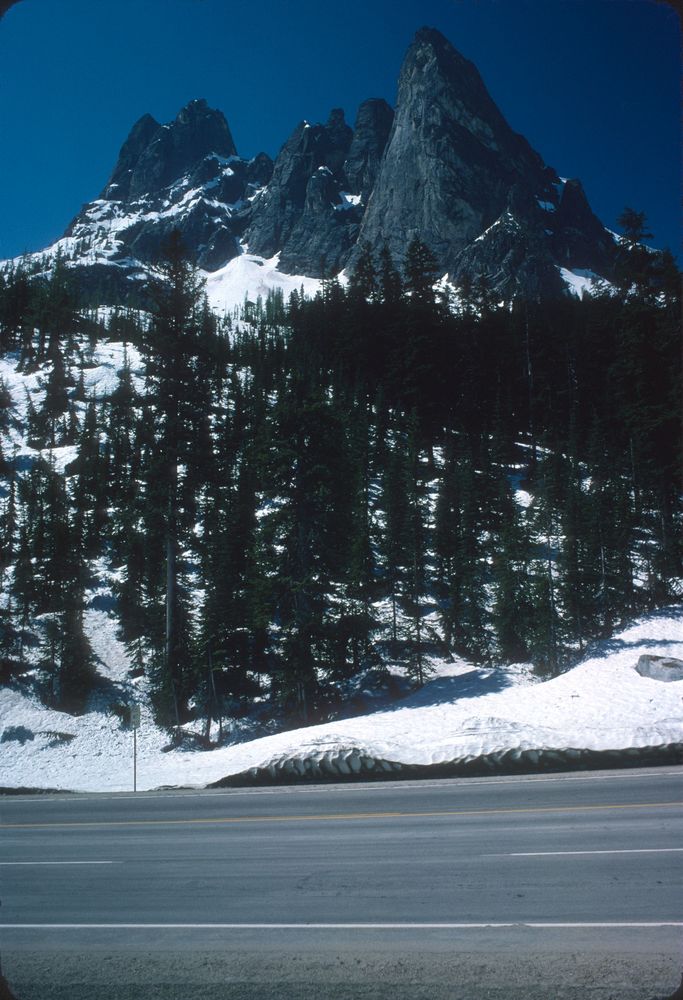
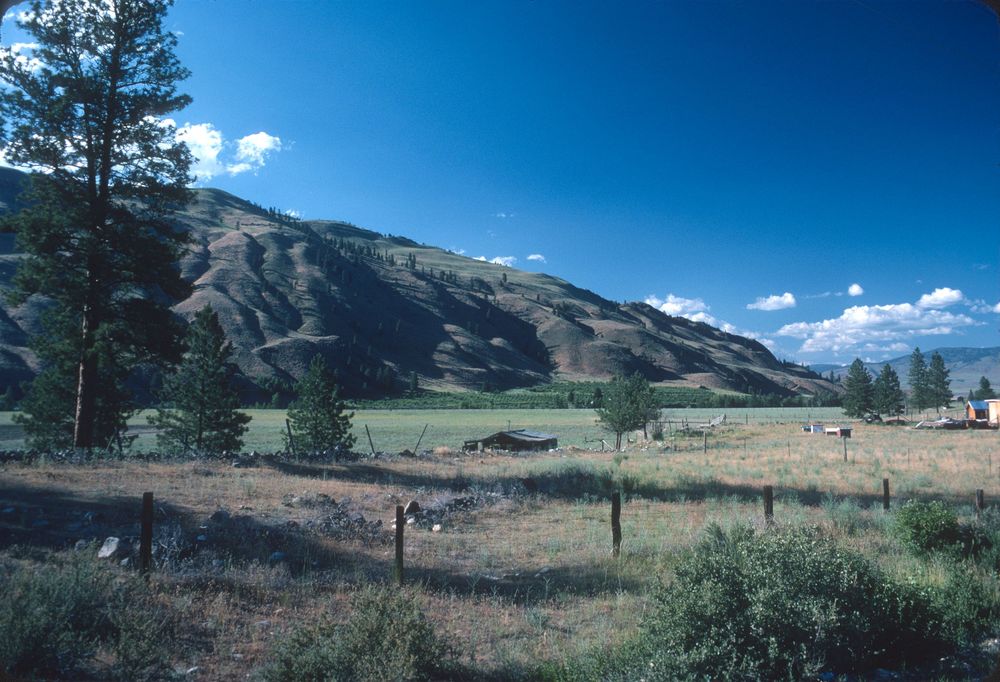
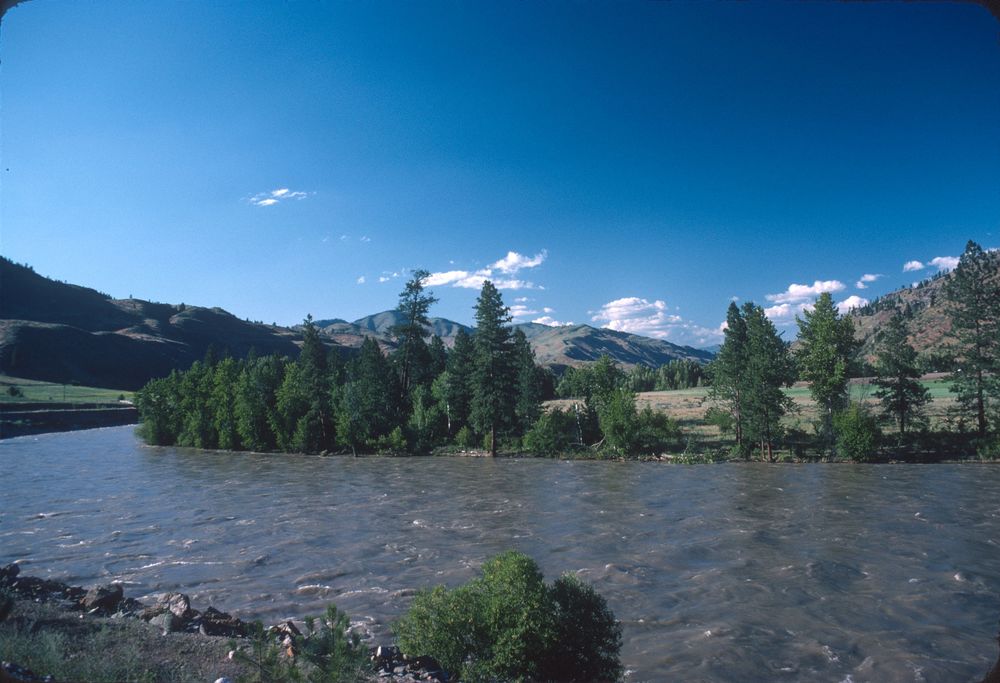
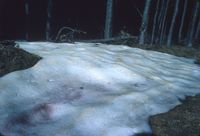
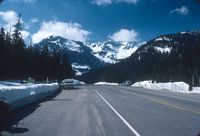
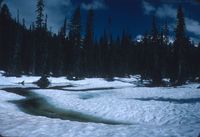
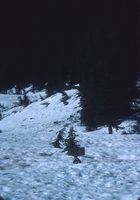
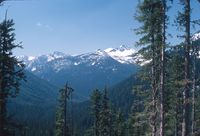
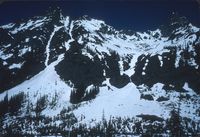
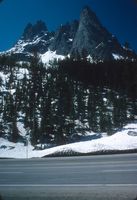
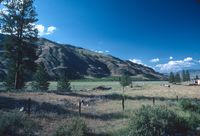
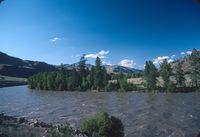
Return to index page
Return to home page
Written 2024 June 8, last updated 2024 June 8.
June 22nd, 4:00 PM Twisp. Wash
odometer start: 1769.2
Now: 1821.0
The North Cascades are really neat! Cycling across them turns out to be much harder than I expected - every half mile there's some new and wonderful view that requires stopping and getting a picture of! The roll I finished yesterday will have a lot of good stuff in it, but Chris and Doug will have to wait for the next roll for the snowbank ecosystem shots.
2009: A sad note on the news today - Kodak announced they're discontinuing Kodachrome 64. ABC Nightly News had a rather nice and fond story about its legacy. I really have to get some slides scanned now.
1974: As I mentioned in the index page, I started this trip with a new camera and new color film, and had only seen a test roll of B&W film for results. It was probably back in Oregon when I finally called home and high on my list of questions was how the photos were and what should I be doing differently. Mom came up with the completely unhelpful comment that they were wonderful. Dad had taught me a lot about photography, but he wasn't much more helpful, though I did get out of him that the exposure and focus were fine, so that was a relief. Once I got home and started looking at the photos I realized Mom was right and that I had been doing well.
Uphill-wise, the Cascades weren't all that hard. Only the stretch from Diablo Dam to above Ross Lake was rather steep (and part of it wound around into a strong headwind) but the rest, even the stretches going up to the passes was pretty simple. The ride down was lots of fun, but not nearly as long as I expected - about 30 up and 10 down, so I must still be pretty high. At Rainy Pass, there were snow banks on either side of the road, but temperatures were in the 50's - a little warm for ideal uphill riding, but not at all uncomfortable.
2023: I just heard a story on the radio about red algae growing on snow fields and uncertainty about what it implied for climate modeling - the algae absorbs sunlight and accelerates melting. They acknowledged it was a global phenomenon but not well studied, so it seems a bit odd that there's handwringing about this. Then again, it was on Living on Earth, a mostly climate alarmist site and radio program. I left a note there about my sighting.
I was a bit surprised to see I hadn't written about it here, so here's what I posted at LoE:
I saw a pink and yellow snow ecosystem in 1974 on a bicycle tour as I rode up through Rainy Pass in the North Cascades on WA Rt 20. At first I thought it was from pollution, but when I noticed the pink was in the higher areas of the snowbanks and yellow where there was likely more water flow I realized I was seeing something neat that I read about four years before.
That article was from a time when people were making a big push into studying ecosystems and the snowbank systems were suggested as simple enough that we could learn to model them very accurately.
The change in climate between the two sides is very striking. Its quite obvious that most of the snow falls on the western side, as that's where most of it was, allowing vegetation (mostly firs) to get a longer hold on summer. The geologic change is also evident. While the Cascades just start with a bang on the west, they seem to be petering away here. Then, again, I'm not all the way past.
I stopped for the night about 3 - 4 miles west of Rainy Pass under cloudy skies and wasn't planning to pitch the tent until the thunder sprinkle started. Hardly rained at all, and when I woke up there was hardly a cloud to be seen. Oh well. Weather here is mostly (95%) sunny and warm (84 degrees) and SE wind (funny, I'm going that way too - grr). From here I'm going to follow 153 to Rt 97 (probably camping near the intersection) and follow 97 north for a few days.
June 23rd 8:45 AM
odometer start: 1856.2
I'm now in Brewster on Rt 97, after spending the night at Alta Lake State Park near the end of Rt 153. Hadn't realized how close I am to Canada, though I should have since 24 mile Ross Lake reaches it. From here it's 77 miles, so I should be able to reach it today.
That presupposes that my rear tire lives through today which may be asking a lot of it. It looks like the ply inside it is torn at one point, causing it to bulge out a little. Not sure what I should do with it, as increasing pressure will put more stress on it and decreasing pressure will put it through more flexion. Guess I'll ride on for a while longer and if it gets any worse I'll switch it with the front tire. This being Sunday makes it a bit hard to buy a new one today.
The area around here is pretty dry, sort of hilly grassland, so it's a bit incongruous to see a river like the Methow trying to overflow its bank.
Well, might as well get going and see how far I can get before the tire blows up.


















Return to index page
Return to home page
Written 2024 June 8, last updated 2024 June 8.